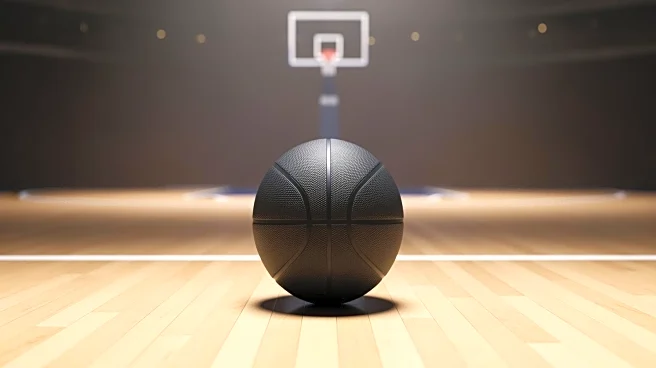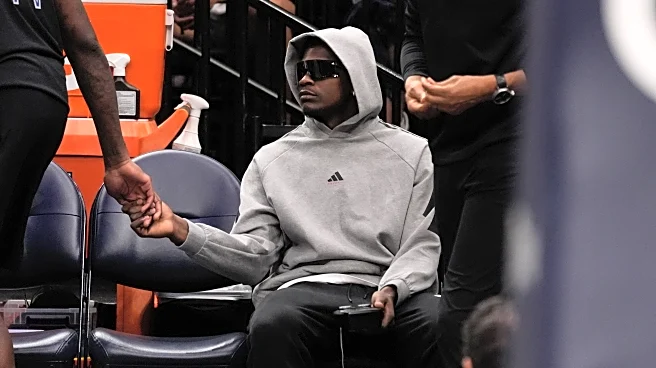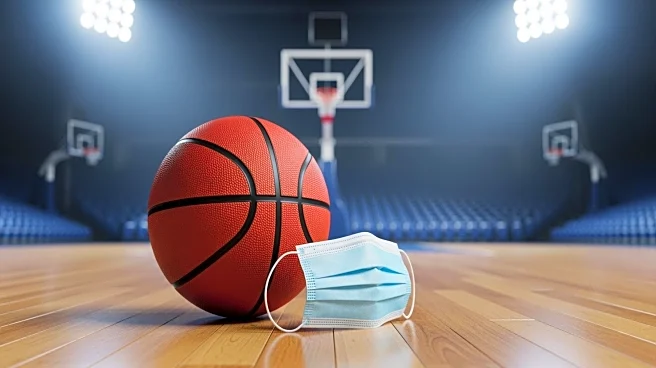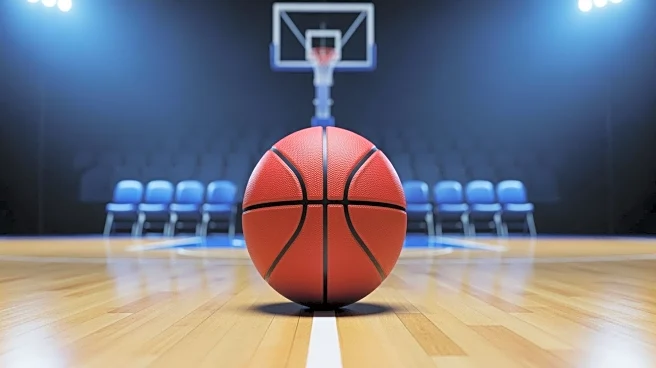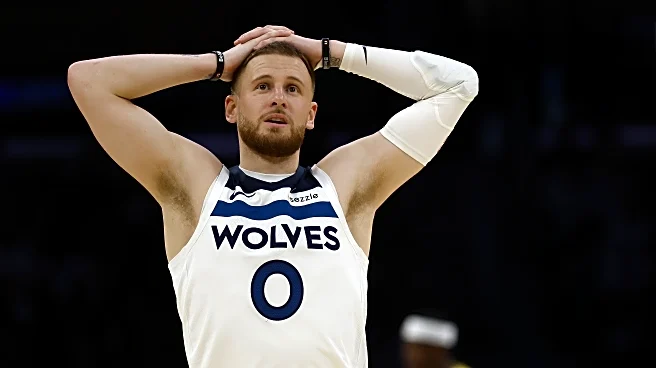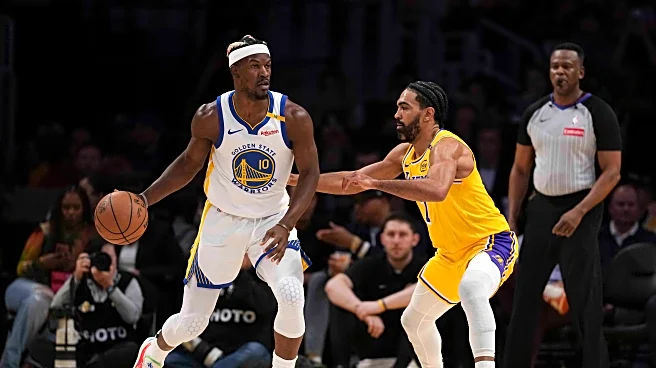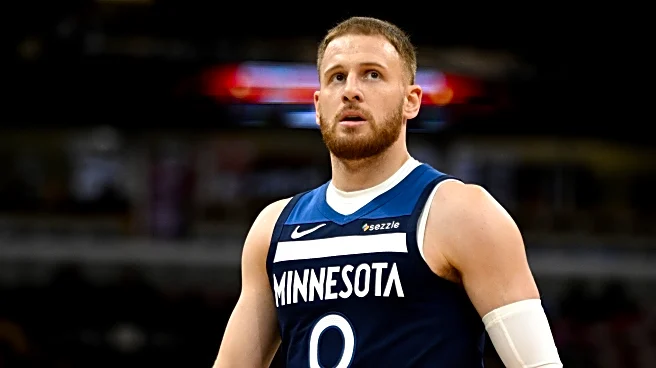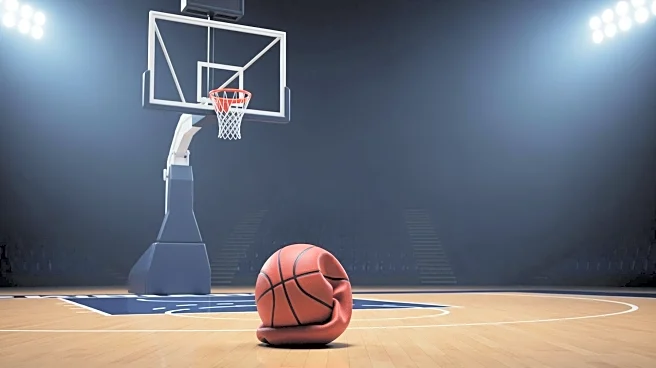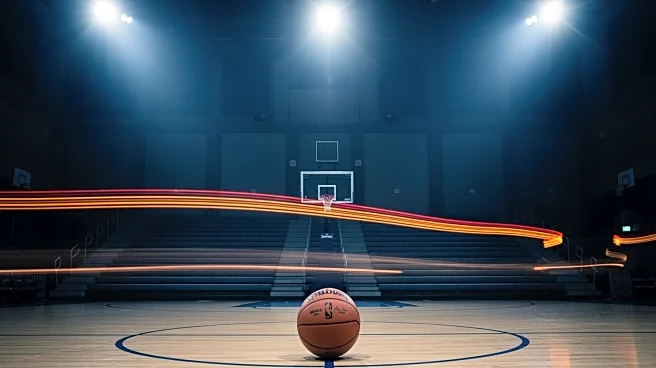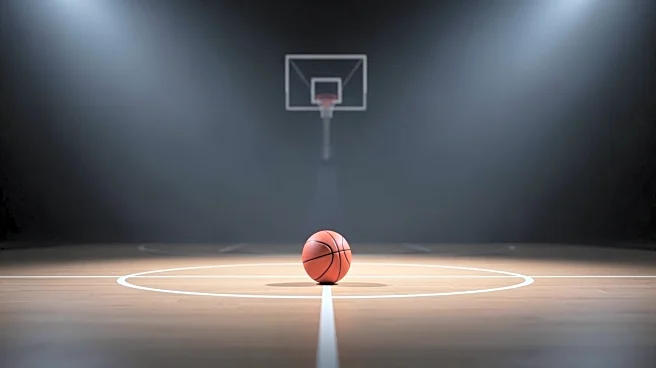What's Happening?
Rob Dillingham, a young point guard for the Minnesota Timberwolves, is currently sidelined due to a nasal fracture. Dillingham, who was selected as the No. 8 overall pick in the 2024 draft, has only played
one minute this season before sustaining the injury. The Timberwolves are eager to develop Dillingham, who averaged 4.5 points and 2.0 assists in his rookie year. Despite the injury, the team's rotation remains largely unaffected, with Donte DiVincenzo starting at point guard and Mike Conley as backup. The injury is primarily a setback for Dillingham's development, and the Timberwolves hope for his quick recovery.
Why It's Important?
Dillingham's injury is significant as it impacts his development and the Timberwolves' long-term plans. As a promising young player, Dillingham's absence from the court delays his growth and integration into the team's strategy. The Timberwolves invested in Dillingham with the expectation of nurturing his talent, and his injury poses challenges to achieving this goal. While the team's current rotation remains stable, Dillingham's return is crucial for future planning and maximizing the team's potential. The situation highlights the importance of player health and development in professional sports, affecting team dynamics and performance.
What's Next?
Dillingham is expected to wear a facemask once his nasal fracture heals sufficiently, allowing him to return to play. The Timberwolves will monitor his recovery closely, aiming to reintegrate him into the lineup as soon as possible. The team's management may consider additional support or training to facilitate Dillingham's development post-injury. Fans and stakeholders will be watching for updates on his recovery and potential impact on the team's performance. The Timberwolves may also explore strategies to minimize the impact of player injuries on their overall season objectives.
Beyond the Headlines
Dillingham's injury underscores the physical demands and risks associated with professional sports. It raises questions about player safety and the measures teams take to protect their athletes. The situation may prompt discussions on improving protective gear and injury prevention strategies in the NBA. Additionally, the focus on Dillingham's development highlights the pressures young athletes face in meeting expectations and achieving career milestones. The Timberwolves' handling of the situation could influence how teams approach player development and injury management in the future.
